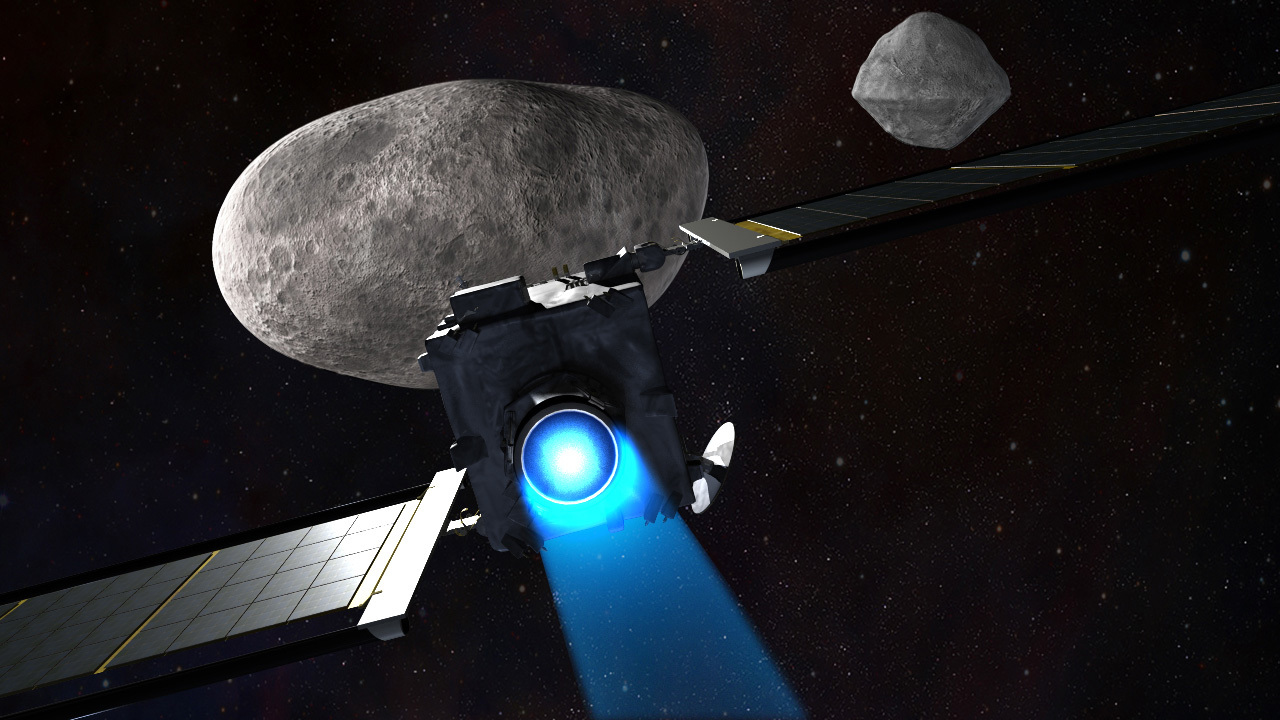NASA's DART spacecraft, humanity's first asteroid defense mission, less than one month from launch
The Double Asteroid Redirection Test will launch on Nov. 23.

NASA is less than one month away from launching humanity's first-ever asteroid-deflecting mission, known as DART, short for "Double Asteroid Redirection Test."
DART is a spacecraft that will launch in late November with the purpose of deflecting an asteroid. The craft will hit an asteroid head-on in an attempt to move it onto a slightly different path. While the asteroid target does not pose a risk of impacting Earth, this will be an important, first-of-its-kind test of this kind of technology.
"The DART mission is a demonstration of capability to respond to a potential asteroid impact threat, should one ever be discovered," the team behind DART wrote in a mission summary.
Ahead of its flight, DART arrived Oct. 2 at its final stop on Earth: Vandenberg Space Force Base in California. DART is set to launch atop a SpaceX Falcon 9 rocket at 1:20 a.m. EST (0620 GMT) on Nov. 23 from Vandenberg's Space Launch Complex 4 East (SLC-4E).
Related: Potentially dangerous asteroids (images)
DART left its previous home at the Johns Hopkins Applied Physics Laboratory (APL) in Maryland and, strapped to the bed of a semi-trailer truck, made its way across the country.
"Although it was just a few days of travel, this has been a journey long coming," Elena Adams, DART mission systems engineer from APL, said in a NASA statement. "We are all excited and relieved to see the truck arrive safely at Vandenberg and for DART to begin its final preparations for launch."
Get the Space.com Newsletter
Breaking space news, the latest updates on rocket launches, skywatching events and more!
After arriving in California, DART has been going through final pre-launch tests and checks as well as fueling for the flight, according to the statement.
The asteroid-deflecting mission will target a binary asteroid system known as Didymos (which means "twin" in Greek). The system includes two asteroids: the 2,559-foot-wide (780 meters) Didymos and Dimorphos, which has a 525-foot (160 m) diameter. Dimorphos orbits Didymos as a small "moonlet" asteroid in the system.
DART will hit Dimorphos nearly head-on, which will push the smaller asteroid closer to Didymos, shortening its orbit by several minutes, according to the statement.
"We spent the last one and a half years testing DART on the ground, practicing for what’s the most highly anticipated part yet: its flight to Dimorphos," Adams added in the same statement. "We have a few more mission rehearsals to do, with the team practicing spacecraft launch operations from Vandenberg in California and the APL Mission Operations Center in Maryland. Once completed, we will be ready for launch and operations."
While the asteroid system is currently 6.8 million miles (11 million kilometers) from Earth, scientists can still study it using Earth-based telescopes. After DART's test mission and its space rock collision, researchers on Earth will use telescopes to see just how much Dimorphos' orbit around Didymos really changed as a result of the impact.
And, a few years from now, Europe plans to launch a mission called Hera to the Didymos system, to get an up-close look at the results of DART's work.
Email Chelsea Gohd at cgohd@space.com or follow her on Twitter @chelsea_gohd. Follow us on Twitter @Spacedotcom and on Facebook.
Join our Space Forums to keep talking space on the latest missions, night sky and more! And if you have a news tip, correction or comment, let us know at: community@space.com.

Chelsea “Foxanne” Gohd joined Space.com in 2018 and is now a Senior Writer, writing about everything from climate change to planetary science and human spaceflight in both articles and on-camera in videos. With a degree in Public Health and biological sciences, Chelsea has written and worked for institutions including the American Museum of Natural History, Scientific American, Discover Magazine Blog, Astronomy Magazine and Live Science. When not writing, editing or filming something space-y, Chelsea "Foxanne" Gohd is writing music and performing as Foxanne, even launching a song to space in 2021 with Inspiration4. You can follow her on Twitter @chelsea_gohd and @foxannemusic.









